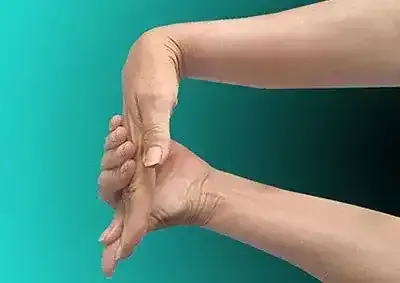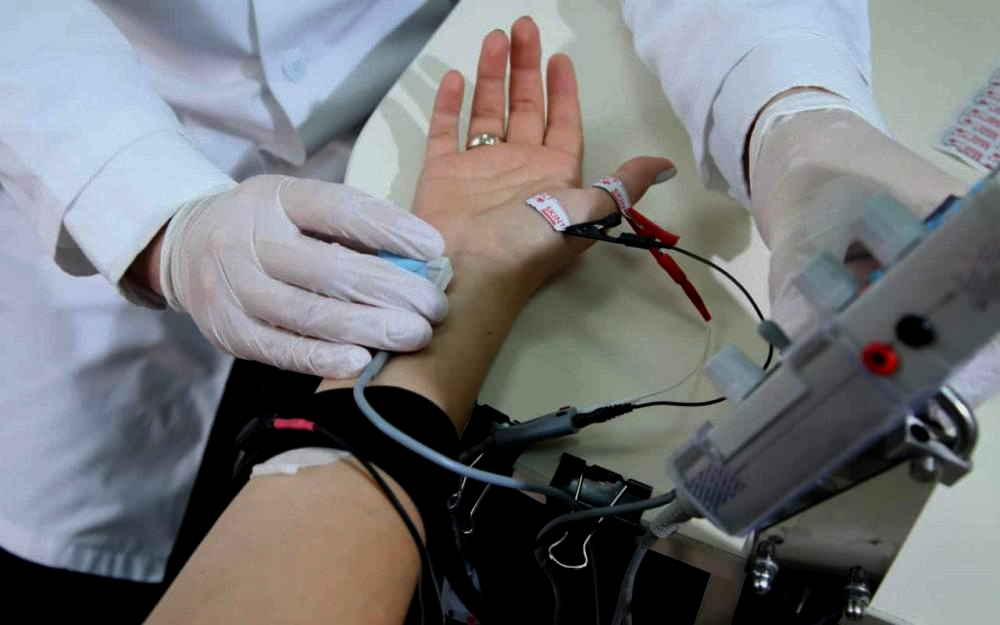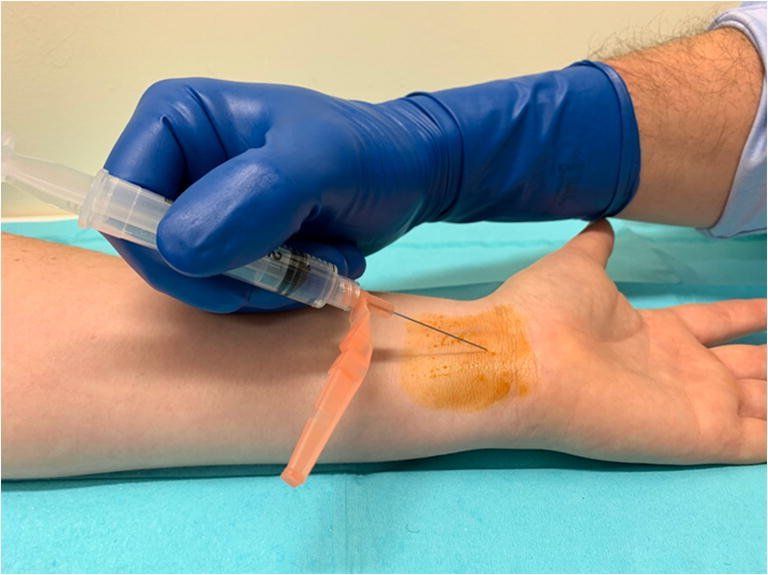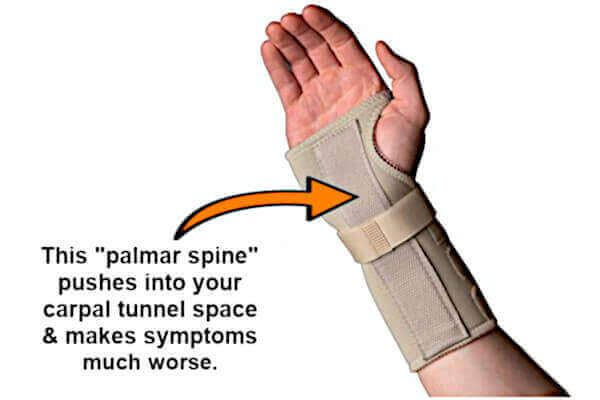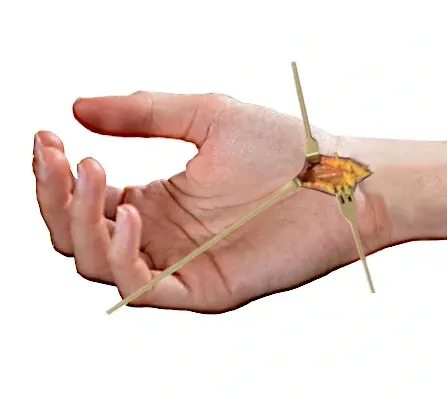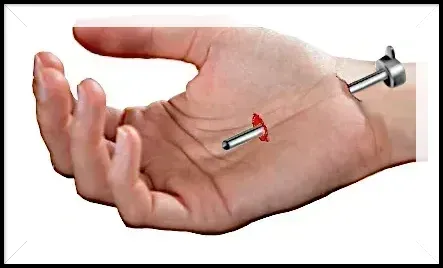What is Carpal Tunnel Syndrome?
Table of Contents
Overview
- In everyday terms, what is carpal tunnel syndrome?
- What are the signs and symptoms?
- What causes it?
- Who gets carpal tunnel syndrome?
- How can I be sure I have carpal tunnel?
- Does carpal tunnel worsen if not treated?
- How severe is my carpal tunnel?
- What can be done to treat it?
- Is surgery my only option?
- What are the alternatives to surgery?
- Where can I talk to an expert for FREE?
Summary
FAQs
About
Overview
If you have have carpal tunnel syndrome then you probably have hand or finger numbness, pain, tingling, burning, weakness, or shooting electric shocks. These common symptoms start out gradually, most often at night. As the condition progresses, symptoms start to appear during the daytime. If left untreated, carpal tunnel syndrome may or may not disappear spontaneously. But it left untreated and it worsens, it almost always requires intervention in order to get better. Successful intervention usually takes the form of a conventional (nonsurgical) therapy like task avoidance, stretching exercises, night bracing, and myofascial massage. If surgery is required, there are two general options: open and endoscopic carpal tunnel release surgery. This article discusses each of these points in detail so that you can make the right decision about therapy as soon as possible.
You can always call
Dr. Zannakis
(CarpalRx's Medical Director) for questions, advice & recommendations. It's FREE!
Call
800-450-6118.
(1) In everyday terms, what is carpal tunnel syndrome?
Carpal tunnel syndrome is a neurological disorder. It affects about 5 million Americans and is also responsible for over 230,000 surgeries each year.
It affects a major nerve in the arm and hand called the
median nerve. Carpal tunnel syndrome is when this nerve becomes irritated or injured and starts to malfunction (see "Causes" below). The malfunction causes a distinct pattern of symptoms in the palm of the hand and fingers (see next).
(2) What are the signs & symptoms of carpal tunnel syndrome?
The primary sings or symptoms of carpal tunnel syndrome are unusual feelings in your hand and fingers. Symptoms are confined to the palm-side of the hand and sometimes the forearm. They never affect your little finger.
In the beginning of the disorder, these feelings are intermittent. This is why most people dismiss the symptoms as "overtired hands".
As carpal tunnel progresses, the symptoms are more constant and more intense. This is when most patients start to take serious notice of the problem.
Note that you can have any one or combination of these symptoms. These include:
- Numbness:
Initially numbness occurs only at night. You may feel the need to hang your hand off the bed for relief. As the condition worseness, numbness also occurs during the day.
- Pain:
When carpal tunnel begins, pain usually is experienced as a dull ache in the palm or fingers. Also in the beginning, sharp stabbing pain may be felt intermittently. As the condition worsens, the pain can be more intense and continuous.
- Tingling:
Tingling or prickling or "pins-and-needles" is a common symptom of carpal tunnel. Usually the tingling is confined to the fingers (particularly the fingertips), the thumb, and the base of the palm.
- Burning and itching: In the initial stages of carpal tunnel syndrome, many patients feel a burning or itching sensation in their palm and fingers. Scratching doesn't help the itching.
- Shooting electric shocks:
This symptom can happen at all stages of the disorder. When gripping an fat object, like a coffee mug, patients may feel an
electric shock shooting up their hand and into their arm.
- Weakness:
Loss of grip strength is common in the moderate and severe stages of the disorder. It is difficult to open a door know, a car door, or hold a steering wheel.
- Loss of dexterity:
Patients in the early and middle stages of carpal tunnel have difficulty with delicate finger movement. They cannot tie their shoelaces, pick up keys or coins, or button a shirt.
- Clumsiness:
Patients with carpal tunnel syndrome, particularly in the more advanced stages, feel their hands are clumsy. They often drop things.
- Puffy feeling:
Your fingers may feel puffy or swollen. However, they probably look perfectly normal.
(3) What causes carpal tunnel syndrome?
The exact cause of carpal tunnel syndrome is not clear to scientists. At its source, the tendons inside your wrist joint (flexor tendons) become irritated. The irritation leads to swelling inside a narrow passageway in your wrist joint called the carpal tunnel (hence the name of the disorder).
This carpal tunnel passageway is tightly packed with the tendons as well as the median nerve. This is a main nerve of the hand that carries sensations like pain and touch.
Now this already tightly-packed passageway has to contend with swollen tendons. But there’s no room for anything to “give” or expand. As a result, the swollen tendons push against the median nerve and crush it.
It's that crushed median nerve that gives you all signs and symptoms of carpal tunnel syndrome.
(4) Who gets carpal tunnel syndrome?
Scientists now have over three decades of data about who gets carpal tunnel syndrome and when. That means you can be placed at higher risk if you:
(5) How can I be sure I have carpal tunnel and not something else?
The two major ways to diagnose carpal tunnel syndrome are using
provocative tests and
electrodiagnostic tests.
Provocative tests (3)
Provocative tests are simple, in-office tests your doctor can perform. The purpose is to see if they can elicit symptoms of carpal tunnel syndrome (or make symptoms more intense). In fact, you can do these
tests on yourself, and at home, and get similar accuracy. The description of the tests below are if you wish to perform them on yourself.
Usually, having
two or more of these tests give positive results confirms carpal tunnel syndrome.
Phalen test
Tinel test
Durkan test
Electrodiagnostic tests (2)
You doctor will order electrodiagnostic tests if your provocative tests are positive for carpal tunnel. However, by themselves, the electrodiagnostic tests are not more accurate than the provocative tests. In other words, they are used to "confirm" the provocative tests.
Electrodiagnostic tests are performed under the supervision of your
carpal tunnel doctor. They require specialized electronic equipment and special training for the technologist.
The electrodiagnostics tests are usually performed in 2 parts: the
nerve conduction test and the
electromyographic test (or EMG).
Nerve conduction test
EMG test
(6) Does carpal tunnel worsen if not treated?
The time it takes for carpal tunnel syndrome to progress. While the timeline is different for everybody, it's typical to see symptoms go from mild to severe in about 6-9 months.
The progression is usually slow and almost unnoticeable.
If left untreated, the probability of carpal tunnel syndrome advancing from mild to severe (in that 6 month period) is about
66%. That means there's a mere 34% chance symptoms will not progress.
The rate that symptoms worsen also varies. For instance, some see symptoms go from barely noticeable to severe in just a couple months. But in others it might take 2 or more years. Symptoms may also linger in a mild form for a long time (usually up to a year) and then worsen suddenly. Or symptoms could intensify steadily.
If symptoms start in one hand, then
88% of the time they'll also appear in the opposite hand. Doctors call this bilateral carpal tunnel syndrome. Symptoms on the opposite hand can start simultaneously. But normally they appear within 6 months of each other.
(7) How severe is my carpal tunnel?
For most people, carpal tunnel syndrome starts almost without notice. You may feel some tingling at your fingertips when typing. Or it may tingle if you tap your wrist or hand. Numbness at night comes and goes.
Want to know how severe your carpal tunnel really is?
Take this 60 second Quiz designed by Dr. Z.
Click here to take Quiz
But as carpal tunnel advances, it gets progressively more unpleasant. Numbness and tingling usually intensify. If pain was just annoying before, it gets far worse in just weeks. This is when life becomes miserable.
The primary stages of carpal tunnel syndrome are:
- Mild: Symptoms become noticeable. They're worse when relaxing or sleeping. Pain or numbness keep you awake at night. During the day, you may notice that you drop things more often.
- Moderate:
Your hands feel clumsy.
Symptoms start bothering you during the daytime. Symptoms like numbness, tingling, and pain are more intense, and other symptoms also begin to show. You might feel shooting electric shocks from your hand. You begin to lose hand strength and dexterity.
- Severe: Symptoms are maximally intense. They are so bad they interfere with every part of your life. Numbness, pain, and tingling are almost unbearable. Loss of grip strength and dexterity are accompanied by loss of sensitivity to hot or cold in your fingers. By the
"end-stage" of the disorder,
much of your median nerve has degenerated irreversibly. This results in catastrophic loss loss of hand function.
(8) What can be done to treat it?
Good old rest
NSAID medications
Steroid shots and drugs
Splints and braces
Stretching exercises
Myofascial release massage therapy
(9) Is surgery my only option?
Definitely not!
Here's what you need to know about carpal tunnel surgery including your chances for remission of symptoms.
What to know about carpal tunnel surgery
In general, your doctor will use one of two surgical methods, depending on which he/she has the most experience. Anyone considering surgery should sit down with their doctor and discuss the various pros and cons of carpal tunnel release surgery.
The aim of all carpal tunnel surgery (called "carpal tunnel
release
surgery") it to release the median nerve from being trapped by swollen tendons.
To relieve the pressure, the surgeon must cut a ligament which holds your wrist bones together. When cut, the bones snap apart, providing more "breathing room" for the median nerve.
The two methods are
open
carpal tunnel release surgery
and
endoscopic carpal tunnel release surgery.
These are detailed below.
Open carpal tunnel release surgery
Open carpal tunnel release surgery
Facts about carpal tunnel surgery
- The
AAOS (American Academy of Orthopedic Surgeons) says that surgery for carpal tunnel should be a last resort. Patients should try all non-surgical methods first. If all fail, the surgery should be considered.
- Surgery is used by less than 5% of patients with carpal tunnel syndrome. Most patients find good relief using
non-surgical remedies.
- The
failure rate (as measured by patient satisfaction 2-3 years after surgery) is approximately 57%.
(10) What are the alternatives to surgery?
As described above, non-surgical remedies include:
- Rest
- Oral pain medicines
- Steroid shots
- Night bracing
- Stretching exercises
- Myofascial release massage
If you have
MILD
symptoms, then any of the above should be beneficial. Use night bracing, stretching or massage each day/night for 3-4 weeks.
If you have
MODERATE
symptoms, then yo need more aggressive therapy. That means
daily
application of myofascial release massage. You also must wear a night brace and do the stretching exercises at least three times daily. Do all this for about 30 days.
If you have
SEVERE
symptoms, you will need the most aggressive therapy. This will require
twice daily
application of myofascial release massage. Wear a night brace and do the stretching exercises every hour, especially whne using your hands a lot. It may require 30-60 days to see good results.
(11) Where can I talk to an expert for FREE?
You can always call
Dr. Zannakis
(CarpalRx's Medical Director) for questions, advice & recommendations. It's FREE! Call
800-450-6118.
Summary
Carpal tunnel syndrome is not a disorder to take lightly. But since symptoms creep up slowly, many people don't recognize the the disorder until it has taken a firm hold. Determining you have this condition early is the BEST thing you can do, because mild symptoms are easily treated. But even if symptoms are moderate or severe, it's never too late to begin an earnest and aggressive therapy regimen to eliminate symptoms for good.
FAQs
- What are the signs of carpal tunnel syndrome?
The most common signs and symptoms are pain, numbness, tingling, burning, shooting electric shocks, weakness, and clumsiness. These occur in your palm and fingers, but not your little finger.
- What is the best nonsurgical remedy?
Actually, most doctors agree that a combination of therapies is best. That means, for instance, the you should employ night racing, stretching exercises, and myofascial release massage simultaneously.
- Which surgical option is best?
This is a discussion you should have with your doctor. Some doctors prefer open release surgery while others prefer endoscopic release surgery. There are
pros and cons to both of them.
About


